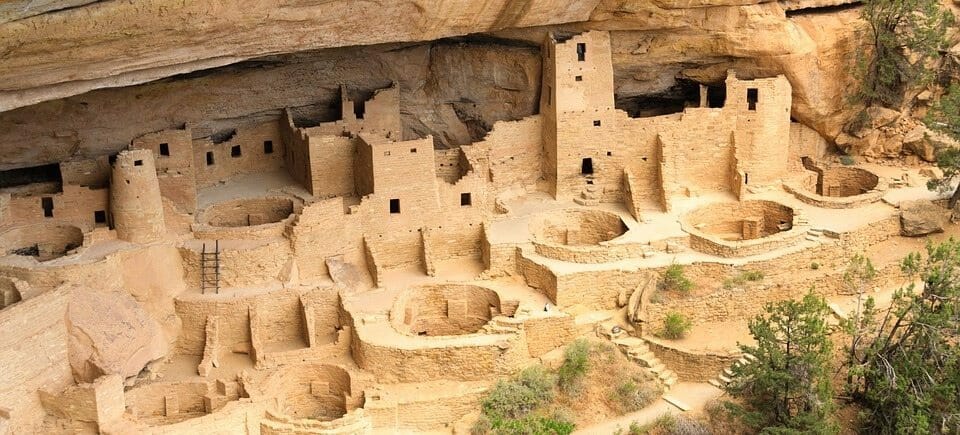History is a perfectly formed subject for incredible field trips. Your students will have a blast and learn more than they thought possible in the museums, landmarks, battlefields, and parks around the great U.S.!
Colonial History
If we labeled this section "American History," it could encompass the entire blog. Instead, let's narrow it down a bit to colonial history, to the period between the first pilgrims landing at Plymouth Rock until the close of the Revolutionary War. For this brand of history, head straight for New England and see the sites up close and personal where they occurred in real life, and not secondary as in a museum.
- Boston - Freedom Trail - 16 historic stops over a two and a half-mile trail through the heart of Boston, including Paul Revere's House, Old North Church, Boston Common, and Faneuil Hall among others.
- Philadelphia - Independence National Historical Park - Here lies the indomitable Liberty Bell, cracked in antiquity and still remaining a beacon for freedom. You'll also encounter Congress Hall, where John Adams was first inaugurated and George Washington was sworn in for the second time, and Independence Hall where the Constitution was drafted and signed.
- Colonial Williamsburg - VA - A wonderful living history park combining historic structures and acted representations of history, your students will be able to see demonstrations on how people lived in the 17th century, hear meetings and learn why they decided to fight the British, and walk through historic homes.
- Jamestown Settlement - Williamsburg, VA - Like Colonial Williamsburg, Jamestown Settlement is a living history park. However, here you can encounter a recreation of the first successful settlement in the New World complete with James Fort, a Powhatan Indian Village, and even the three tall ships which brought them from England.
Spanish History
Many people don't realize that much of the United States was occupied and settled by the Spanish at one point or another. Some of the most notable sites include much of Florida, Texas, and California which made up New Spain. Their marks are left in the preserved historic sites, parks, and even in the style of building which has remained in the modern civilization. Exploring settlement history helps students to understand how hard our ancestors fought for freedom, to maintain this country as a unified front, as well as the melting pot culture we've adopted.
- St. Augustine, FL - This beautiful city is officially remembered as the oldest in the United States as it was settled in 1565 by the Spanish. It's also the oldest continuously occupied European settlement in the country, prompting much of the history to be preserved as in sites like the Castillo de San Marcos and others.
- Santa Fe, NM - Founded in 1610 as a Spanish colony, Santa Fe's historic district is wonderfully preserved with its stone streets and adobe homes. Several of the Spanish established churches remain in operation but you can also explore along the Old Spanish National Historic Trail.
- San Diego, CA - San Diego is remembered as one of the oldest towns in California, originally settled by the Spanish as part of New Spain. Old Town San Diego is a protected historical park preserving many of the first buildings in the city including several homes and a memorial to the first Spanish settlement in 1769.
Religious History
The American freedom of religion was a driving force that brought so many immigrants through Ellis Island. Churches, temples, and mosques sprouted up around the nation to accommodate the new believers, converts, and citizens as they endeavored to practice their faith. But religion was brought spread even before the U.S. was an official country, by missionaries and explorers like the Spanish and French.
- Alta California Missions - Central and Southern California - Newly canonized St. Junipero Serra established the Alta California mission churches up and down the West Coast, in the name of the Roman Catholic Church in the 18th century. Nearly all of these churches are still standing and many are still in operation and open for tours. This is a great destination to also learn about Spanish history in America.
- Eldridge Street Synagogue - New York City - One of the oldest Jewish temples in New York City, the Eldridge Street Synagogue was built in 1887 and underwent a twenty-year renovation in the 1980s. Today, the synagogue is incredibly beautiful, historic, and maintains an onsite museum dedicated to educating people on the Jewish faith, their traditions, and their history in America and Europe.
- Temple Square - Salt Lake City - A 10 acre complex in the middle of the city is devoted to the mother church of the Latter Day Saints. While only members of the Mormon faith are allowed inside the beautiful temple at the center, everyone can tour the museums, historic buildings, and other sites around the square and learn about the church and its history.
Native American History
It's important not to forget the first inhabitants of this great nation, their cultures and customs, and the trials and tribulations they underwent. Learn about the country's first inhabitants, their interactions with the pilgrims and growing tensions with the American government through these historic sites.
- Aztec Ruins National Monument - NM - In the northwestern part of the state you'll find ancient stone structures and foundations, some dating as far back as the 11th to 13th centuries. These homes belonged to the Anasazi or the Ancient Puebloans, some of the first recorded inhabitants of what we now call the U.S. Learn about them more in the visitor center and along the historic trail.
- Trail of Tears - In the mid-1800s, because of Andrew Jackson's policies to remove Native Americans from their homes, the Cherokee, Muscogee, Seminole, Chickasaw, and Choctaw people were driven toward Oklahoma. The harsh conditions and forcible removal resulted in thousands of Native American deaths and is forever remembered as one of the most devastating events in Native American history.
- Mesa Verde National Park - CO - One of the more memorable and recognizable Native American heritage sites, Mesa Verde is a collection of ancient cliff dwellings, over 600 in fact. The dwellings are, in some cases, over a thousand years old and are impressively still intact for the most part (see picture above). At the National Park, you'll also find a Visitor Center, the Chapin Mesa Archaeological Museum, and you can choose to visit one of the dwellings like the Cliff Palace.






